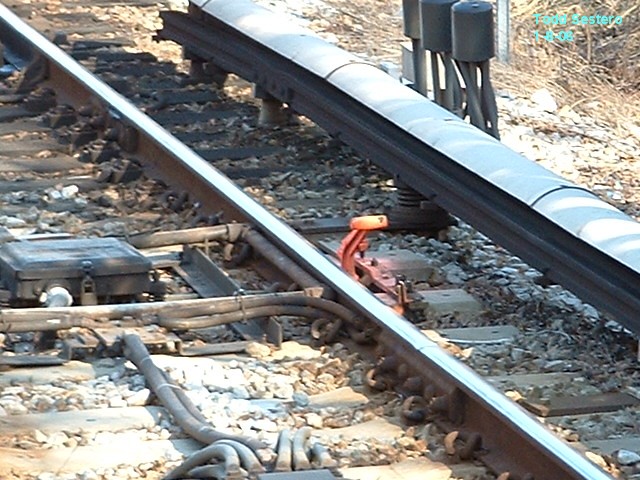Interesting, in-depth, and long article primarily on CBTC; the title is a bit misleading but informative. Some fascinating insights. I appreciate the Atlantic's writing generally speaking; this article certainly seems, unlike so many others in the general media, to be well-informed and researched. It will take more informed minds than mine to speak to some of the details...
The pictures are via the sourced article, although they may be from third-parties; see linked article for attribution:
The Atlantic
A brief, fair-use quote really doesn't do the article justice, but here is my attempt <SNIPS>:
Why New York Subway Lines Are Missing Countdown Clocks
...
But here’s the truly crazy thing: The only people who know exactly where that train is are on the train itself. The signal-tower operators don’t know; there’s no one in the Rail Control Center who could tell you, because the F isn’t hooked up to the Rail Control Center. Today, for the F train—along with the G, the A, B, C, D, E, J, M, N, Q, R, and Z—the best the system can say is that the train will get there when it gets there.
...
There is a locked door just below the southwest entrance to the 14th Street A/C/E station. It looks like the door to a small office or break room. But going inside is like stumbling into the Keebler tree. There is a whole world down there: a warren of rooms and equipment, including a working section of track about 20 yards long, that comprise the subway system’s Signal School. This is where the MTA teaches its staff to operate the subway’s switches and signals, which look like simple traffic lights but turn out to be key components of one of the earliest and most complex manmade information-processing systems in existence.
...
The reason there are no realtime countdown clocks on the F line is that even the tower operators don’t know which train is where. All they can see is that a certain section is occupied by a certain anonymous hunk of steel. It’s anonymous because no one has a view of the whole system. A hunk comes into one section of track from somewhere else; the tower’s job is to get it through their section efficiently. The next tower they pass it to will likewise not know whether it’s an F, say, or a G. When there are incidents, trains are located by deduction.
...
By 1994 the MTA was presenting a business case for a new kind of signaling system that had become the standard for modern transit projects: communications-based train control, or CBTC.
...
CBTC does away with the “fixed-block” signaling system, where track is broken into sections that report whether they’re occupied. Instead, each train is equipped with a radio and onboard computer that identifies its precise location, and coordinates that information in real time with a central control center and other trains to decide exactly how fast it can safely go. Trains therefore run with a moving window around them, which constantly shifts depending on their own speed, size, track conditions, and traffic.
The big benefit is that this allows you to run trains closer together. And you can use the track more flexibly. For example, in many fixed-block signaling systems, including New York’s, the signals along certain sections are only set up for trains to go in one direction. But CBTC just sees a bunch of track; it can automatically figure out which parts of it are available, say, for turning trains around.
...
Overall, it's an excellent walk-through of CBTC, previous attempts at it, the ATS that's on the A division which is not compatible, and current plans. I'm sure there's a part of the Capital Plan that is devoted to CBTC.
Accompanying pictures:
